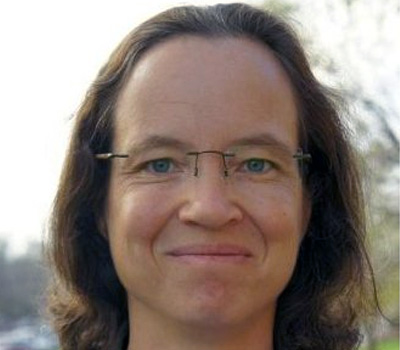Unlocking nature's treasure trough for the discovery of novel pharmaceuticals
Microbes and plants are able to synthesize an unmatched number of natural products. It is challenging to replicate this synthesis due to the structural complexity of the molecules. However, with the sophistication of genetic methods for the manipulation of microbial cells and with increasing knowledge about biosynthetic processes on a molecular level, it is feasible to manipulate biosynthetic pathways for increased production levels in the natural producers and also to combine genes encoding enzyme catalysts from different organisms into new routes for the production of novel compounds by engineered organisms. Dr. Claudia Schmidt-Dannert, of the University of Minnesota, is interested in exploring and utilizing the metabolic machineries of plants and microorganisms to enable the discovery and synthesis of valuable compounds in engineered microbial cells. Dr. Schmidt-Dannert and her team combine enzyme functions encoded by genes obtained from different sources into new biosynthetic pathways in engineered cells for the production of desired compounds.
At present, she and her team study and engineer the biosynthesis of isoprenoid compounds which represent the largest class of natural products with over 20,000 compounds described. These compounds have a wide range of biological functions and are receiving industrial and pharmaceutical interest as pharmaceuticals, antioxidants, colorants, vitamins, and aroma compounds. Dr. Schmidt-Dannert's current investigation on the biosynthesis of one group of pharmaceutically important isoprenoids - the sesquiterpenes is particularly important for the discovery of new pharmaceuticals. Well-known examples of current sesquiterpene-derived drugs are the anticancer and antimalarial compounds taxol(R) and artemisinin, respectively. She and her team initially studied bacteria as new sources for these compounds, but realized that mushrooms represent an even greater and a completely untapped source for the discovery of bioactive sesquiterpenes. Dr. Schmidt-Dannert's group is presently the only group that is exploring the biosynthetic potential of mushrooms on a genetic level. Therefore, her group has essentially established the framework for the discovery of these novel biosynthetic routes in their genomes. Dr. Schmidt-Dannert's research holds promise for creating potent antimicrobial and anticancer activities using resources already available at the University of Minnesota!
Current research includes:
-
Novel Compounds: Mushrooms have been used for centuries in traditional medicine, and they are known to produce a range of unique sesquiterpene structures, many of them with demonstrated antimicrobial, cytotoxic, immune-modulating and anti-inflammatory activities. A large effort in Dr. Schmidt-Dannert's research group is now focused on the identification and characterization of novel compounds in this fascinating class of organisms.
-
Jack-O-Lantern Mushroom: Dr. Schmidt-Dannert and her team recently completed the genome sequence of one mushroom, the Jack-O-Lantern mushroom and identified the genes responsible for the biosynthesis of the anticancer illudin compounds by this mushroom. This gave them access to a large set of enzymes and their genes, which they now use to discover and clone genes encoding biosynthetic enzymes from the genomes of a range of mushrooms.
-
Useful Drugs: Most of the mushrooms that have a sequenced genome have been sequenced because of their ability to break down plant material for biofuel production purposes. However, Dr. Schmidt-Dannert is currently sequencing the genomes of mushrooms that have been used since millennia in traditional medicine and/or are known to make compounds useful as drugs. She and her team are building a pipeline for the identification and subsequent engineered production of diverse sesquiterpenoids for screening and testing compounds with new pharmaceutical properties.
Bio
Dr. Claudia Schmidt-Dannert is interested in microorganisms and plants that naturally synthesize a diversity of chemical compounds useful as drugs, new biomaterials and in food applications. Taking advantage of advances in genome sequencing, Dr. Schmidt-Dannert has screened a multitude of genes from microorganisms and plants for new biosynthetic functions. In doing so, she is fitting microbial cells with new biosynthetic abilities using metabolic and genetic pathway engineering strategies together with evolutionary and rational protein engineering strategies to alter and study biosynthetic activities.
As a high school student, Dr. Schmidt-Dannert had a fantastic biology and chemistry teacher. Her passion for biology and chemistry motivated Dr. Schmidt-Dannert to pursue a career in Biochemistry and Biotechnology. Dr. Schmidt-Dannert is intrigued by the molecular mechanisms by which biological systems are capable to execute very complex functions. In particular, she is fascinated by how cells are capable of synthesizing very efficiently complex molecules - unmatched by synthetic chemistry approaches. Dr. Schmidt-Dannert's goal is not to merely study cellular biochemical mechanisms, but to use this information for the redesign of biological systems to carry out useful functions and/or synthesize compounds that are useful for us such as pharmaceuticals or chemicals.
Website: www.cbs.umn.edu/lab/schmidt-dannert
In the News
University of Minnesota
Publications
Videos
Awards
Profile in US News & World Report on "Innovators 2001 in Science", 2001
http://www.usnews.com


